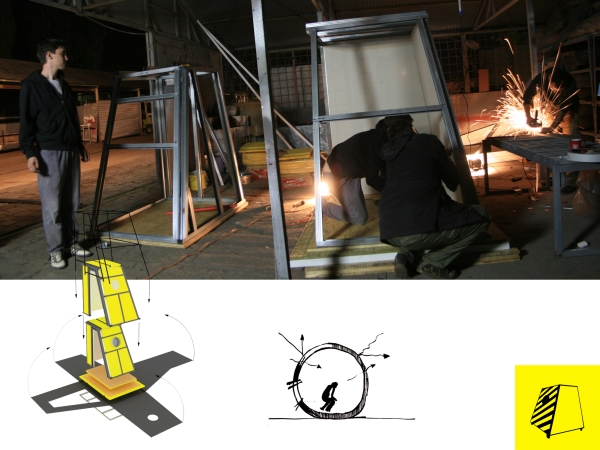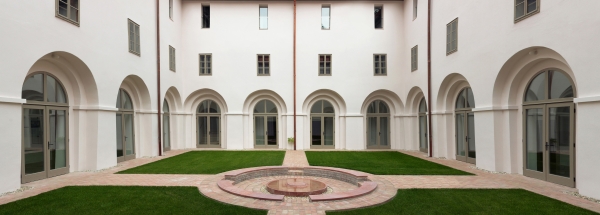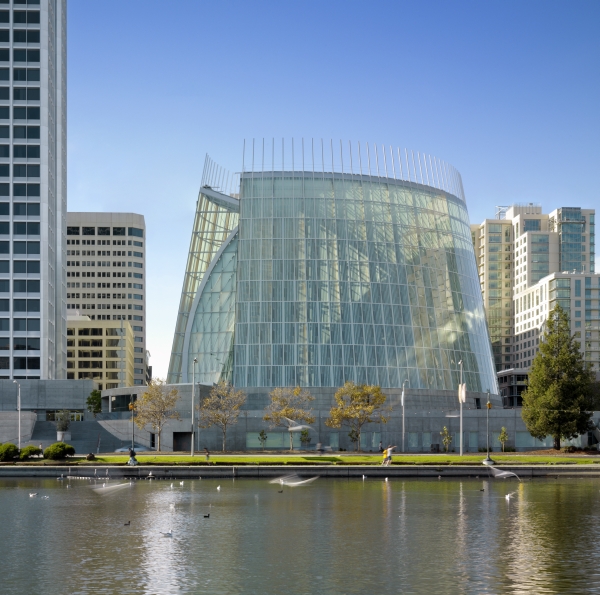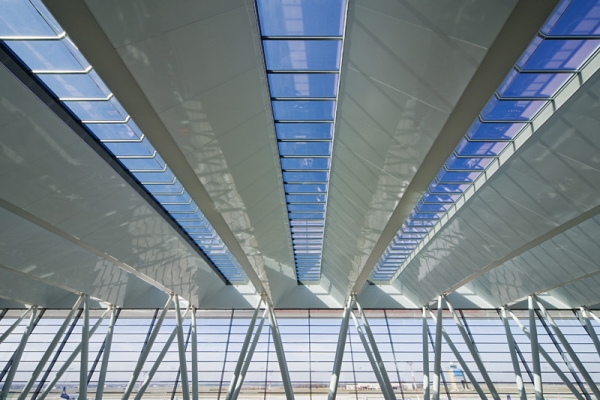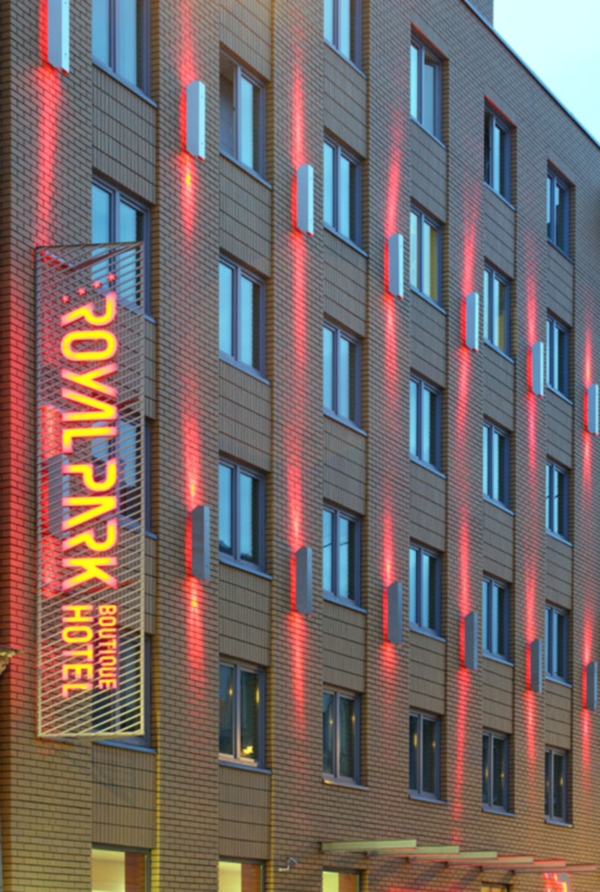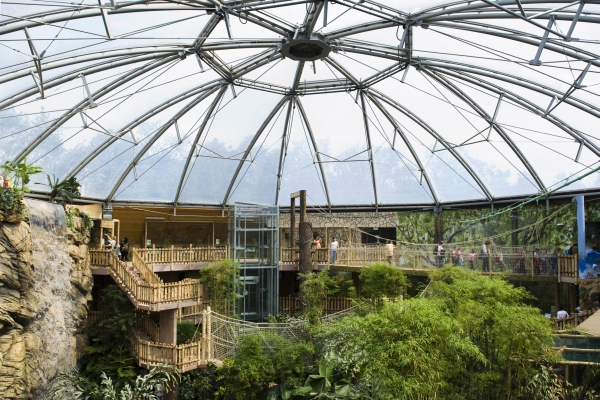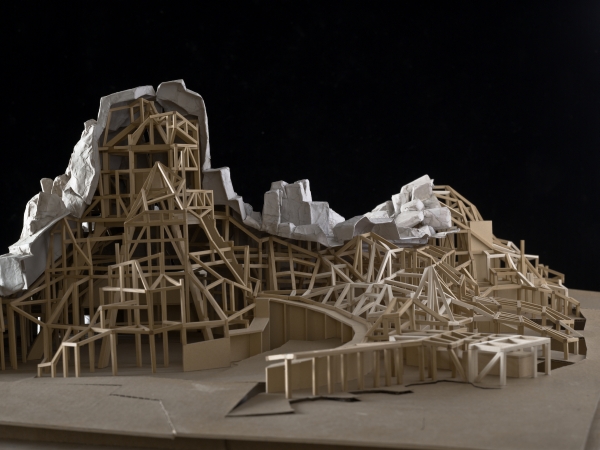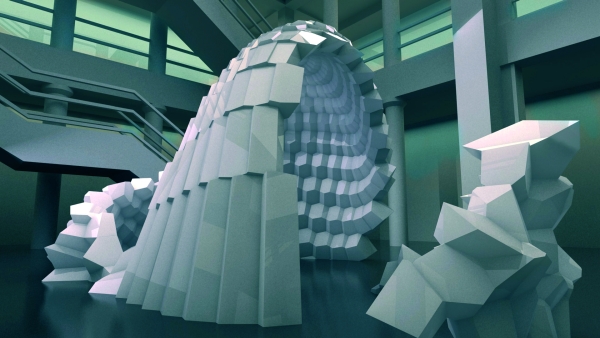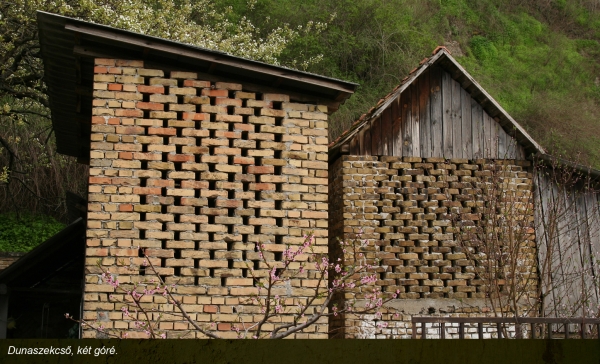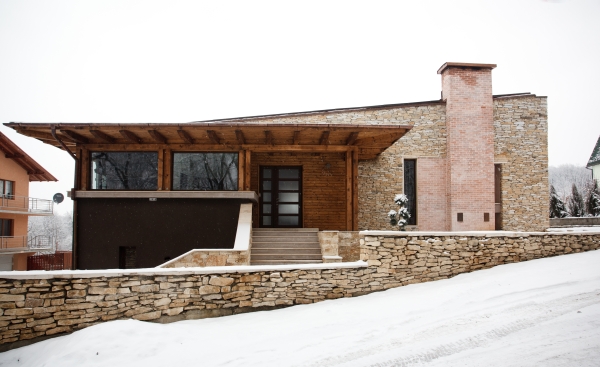A Malagai Szépművészeti Egyetem hallgatói évek óta az alagsori műtermekben dolgoztak, ahol sem megfelelő világítás, sem szellőzés nem volt. A diákok és a tanárok egy része jobb hangulatú és használható alkotóműhelyek létrehozását tervezték. A Recetas Urbanas (Városi Receptek) műhely alternatív építészeti beavatkozásokra…
Architecture Awards in Hungary
Széchenyi Award: Gyula Istvánfi
Kossuth Award: István Orosz
Ybl Miklós Award: Péter Fejérdy, Richárd Hőnich, Csaba Nagy, Tamás Perényi, László Rostás
A Monastery on the Frontier
The salvation project of this old building could not probably have been managed by more professional experts than the architects’ office of Béla Pazár and Éva Magyari as they had already designed the reconstruction of highly significant historic buildings such as Sándor Palace and the Music Academy in Budapest.
An Academy of the Future
Arriving in Felcsút we are welcome by an eye-catching cupola by Makovecz to the right on the margins of the village. Against the sunlight the black natural slate shimmers in silver and as we pass by light creeps upon it enlivening its scales to resemble a fish cast ashore known from fairy tales: with a crown on its head it is the king of all fish himself.
Lumen Christi
Managing the San Francisco-based office of Skidmore Owings & Merrill, which is a brand with a pleasant ring, Craig W. Hartman opened up new aesthetic dimensions within the flourishing era of modernity at the turn of the millennium – the cathedral in Oakland refers to forms and symbols with high-standard sensitivity to construction and refined composedness.
A Hall Open To the Skies
An airport in the 21st century is a complex system of a variety of functions, delicate technology and – almost compulsorily – a mixture of attractive sights. Offering first-class comfort, the former Ferihegyi 2A-2B terminal has been extended by a hall of world standards. Being constructed since the 1980s, the structure of the airport has been enriched…
The World of Nuances
With its sophisticated design of a brick facade and a character resonating with eclectic-style rows of houses in a sensitive way, the new hotel building has already exerted enormous influence on the streetscape as such as well as on the atmosphere of its neighbourhood. Facelifted a couple of years ago, the lavish departure hall…
An Overall Impression of a Zoo Park
The zoo in Nyíregyháza has been doing a lot to make visits free from such undertones. The basic means to achieve this is the relative spaciousness of runways unprecedented elsewhere and the intensive communication with the animals. However, owing to developments taking place in the past few years the zoo has entered a new era, and this change of scales…
The Great Rock
The concept being realized now in its modernized form was born 100 years ago: it is in one of the most bizarre structures of the Budapest Zoo named the Big Rock. Erected during the large-scale reconstruction in 1909-12, it was moulded after an existing limestone hill with a dolomite cap in Transylvani. Its renewal in 2006-08 gave new impetus to the recycling of the building itself.
The Exhibition of Moholy-Nagy Scholarship
Young designers starting their careers are supported by the Moholy-Nagy scholarship founded in 1988 to mature the most recent ideas of Hungarian design. It has been a tradition for years now that those granted this scholarship present their works at an exhibition in the Museum of Applied Arts. Some of the most exciting materials on display…
The Architecture of Common Sense
I gave my lecture of habilitation the title The Architecture of Common Sense. I have chosen it because it refers to architecture living in alternative versions undergoing continuous changes as well as to contemporary architecture systematically building itself from the knowledge and expertise of several millennia.
A Primary House
The location is found in the south of Kolozsvár (Cluj Napoca): it is a small corner lot in the Bükk forest. Once a favourite destination of locals going for an excursion, it is a place where there had been nothing else but a few weekend houses, a camping site and the green forest itself. However, it has been developed rapidly by now to grow into a green-belt…
